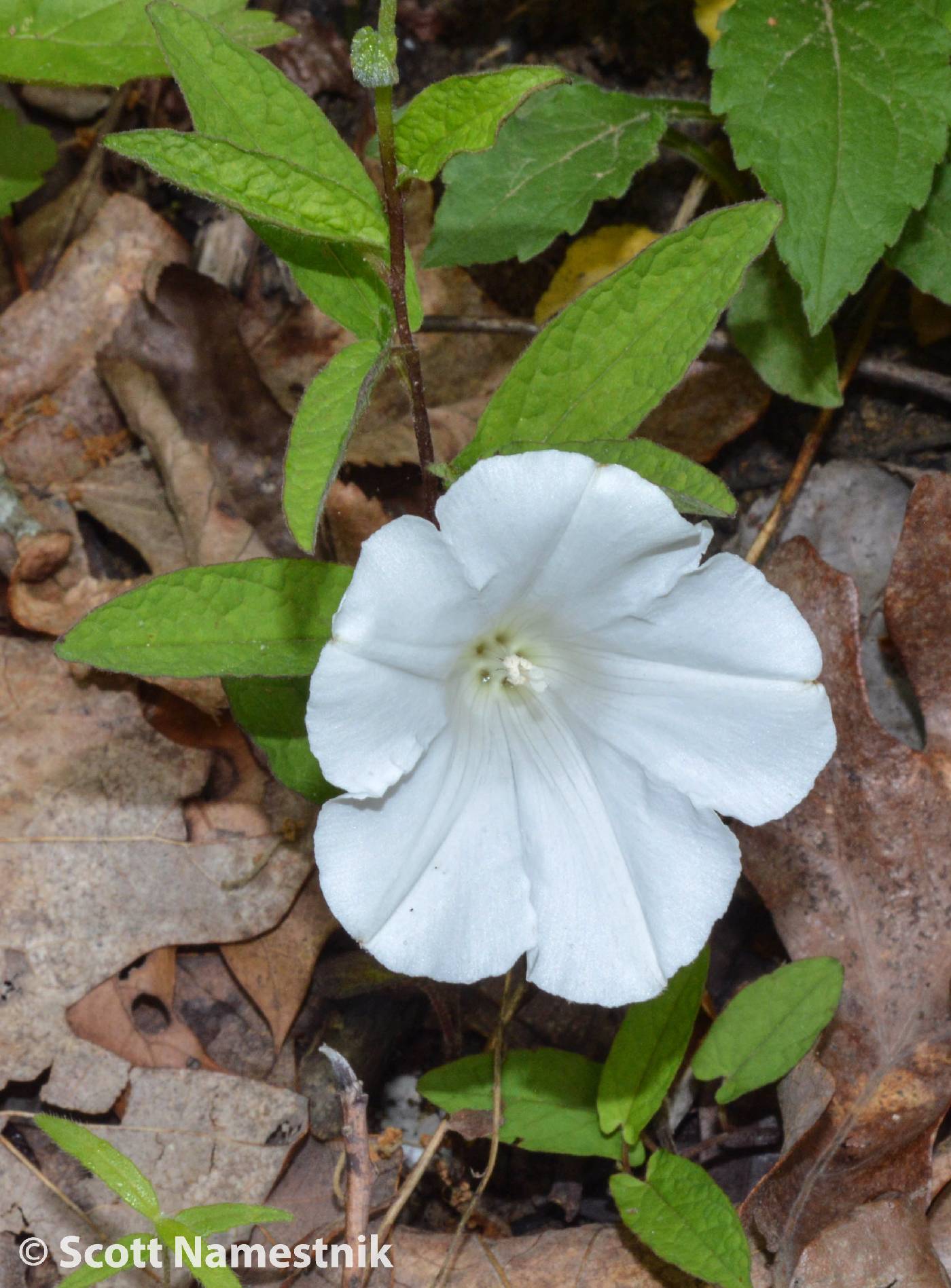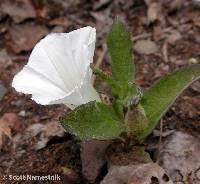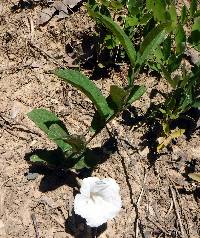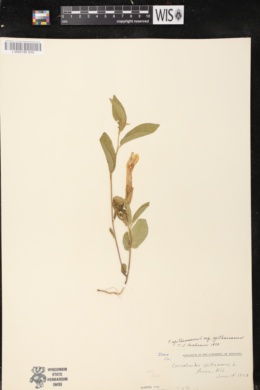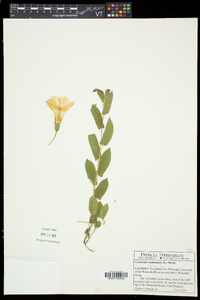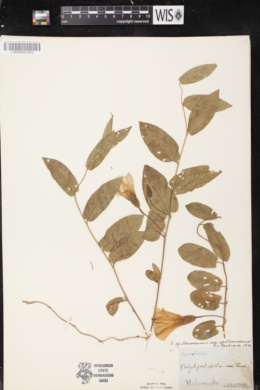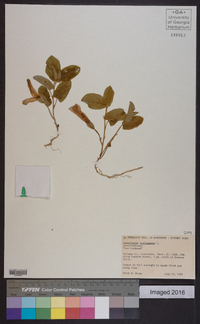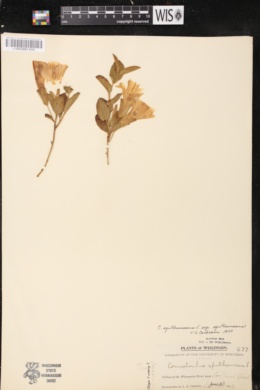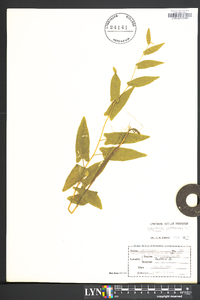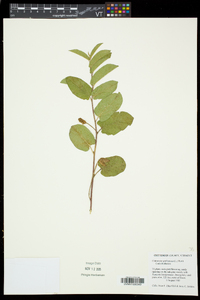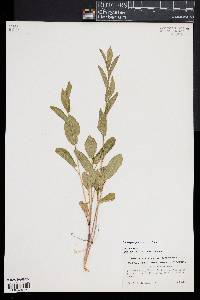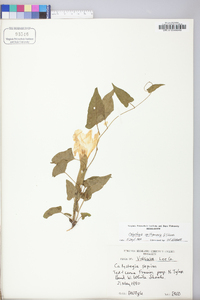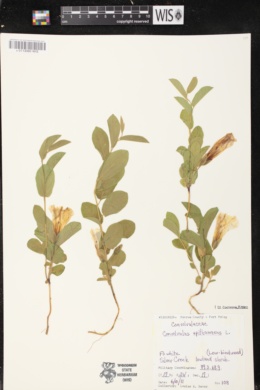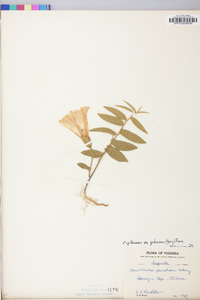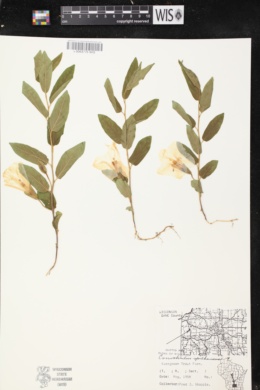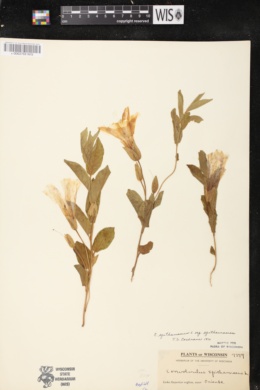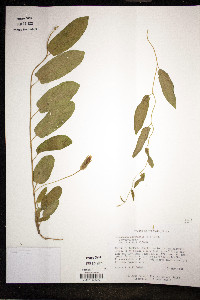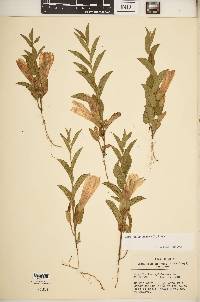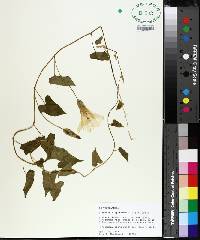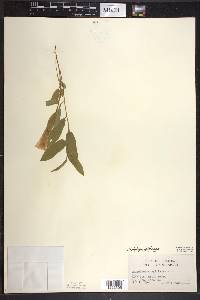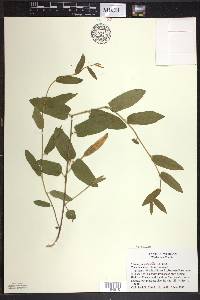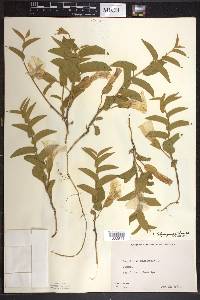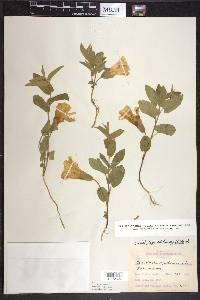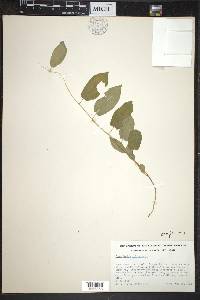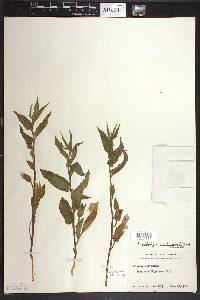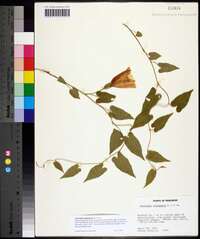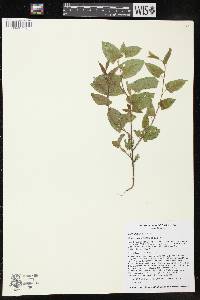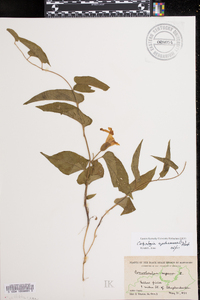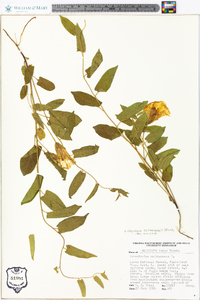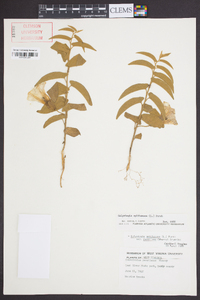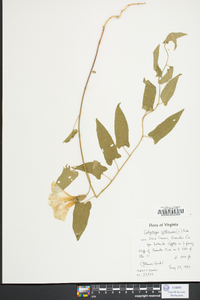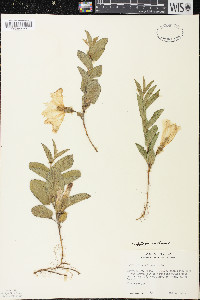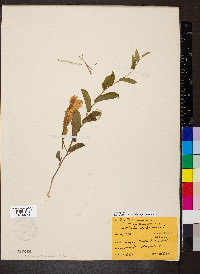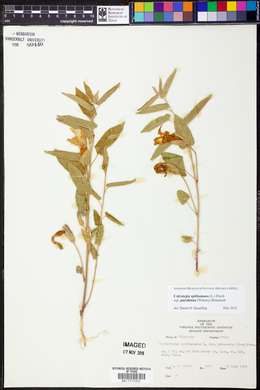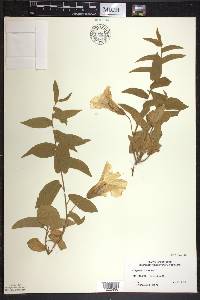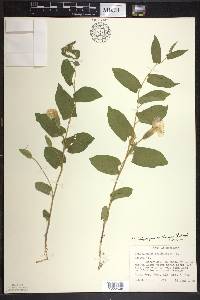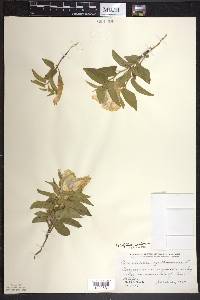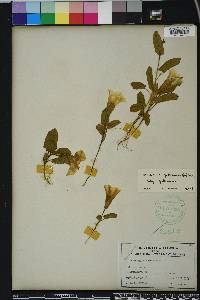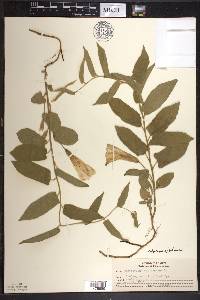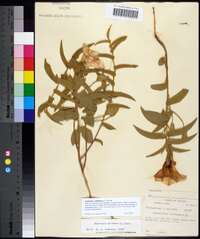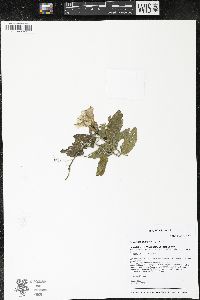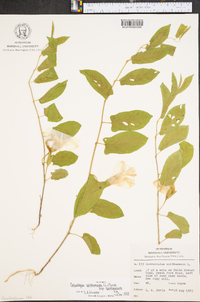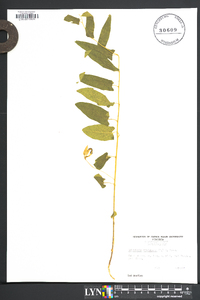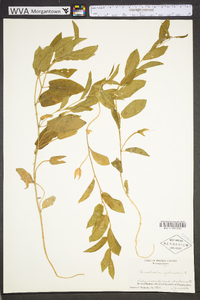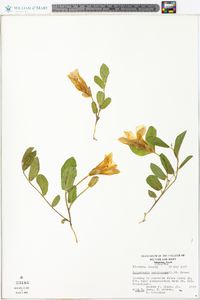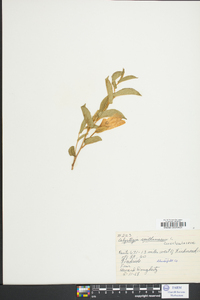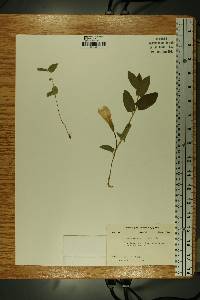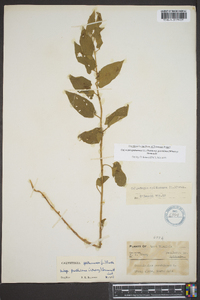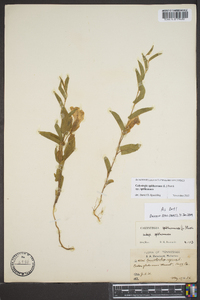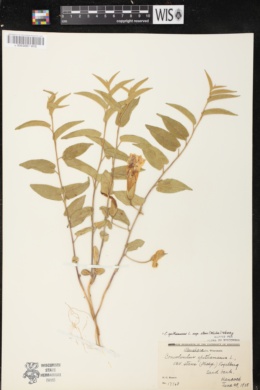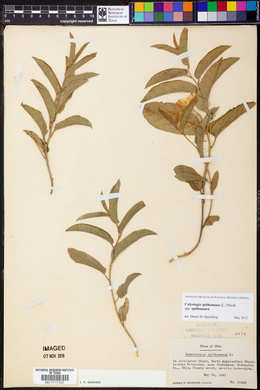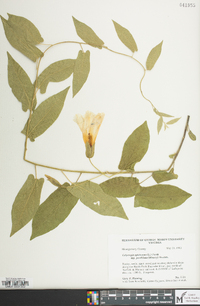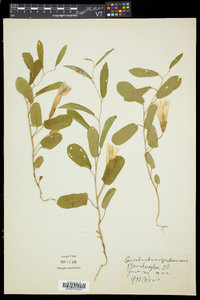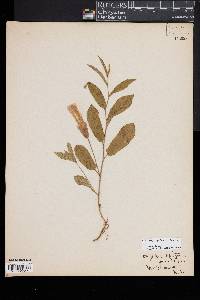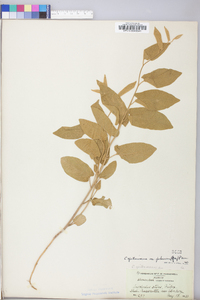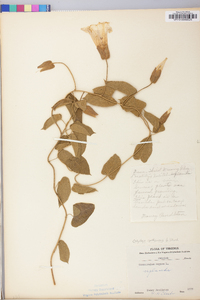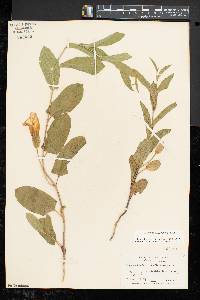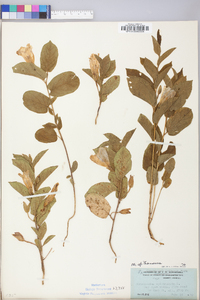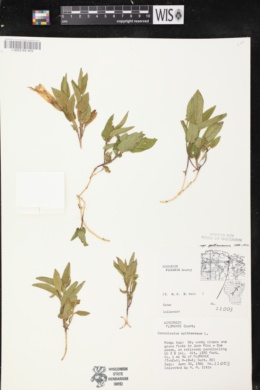Calystegia spithamaea
|
|
|
|
Family: Convolvulaceae
Low False Bindweed
|
Perennial herb 70 cm - 0.5 m tall Stem: single or with a few branches from near base, short, hairy, erect, but often somewhat twisted toward tip and then declining well above flowers. If the stem is cut or broken, it exudes a milky sap. Leaves: alternate, short-stalked (much shorter than blade), non-toothed, hairy, 3 - 8 cm long, longer than wide, oblong to more inversely egg-shaped, with somewhat rounded to flat or slightly indented base, and blunt-pointed or rounded tip. Flowers: one to four, singly in lowermost leaf axils, erectly long-stalked (longer than subtending leaf stalk), white or pale pink, showy, 4 - 7 cm long, radially symmetric, tubular to funnel-shaped. Each flower is immediately subtended by two large (1.2 - 3 cm long), often hairy, non-toothed, oblong or egg-shaped (broad base and narrowed tip) bracts which hide the sepals. Sepals: five, green, more or less lance-shaped, but obscured by much larger subtending bracts. Petals: five, but fused into a long tube with expanded limb, which may be shallowly five-lobed or merely wavy along edges. Stamens: five, attached to inside base of petal tube, then separating, but not extending beyond petal tube. Pistil: with one, single-chambered, superior ovary; and a single, slender style which ends in two oblong, blunt, and somewhat cylindric stigmas. Fruit: stalked, several-seeded, single-chambered, rounded capsules. Similar species: Calystegia spithamaea is most similar to C. macounii, but that species is hairless, the leaf stalks are much longer, and the plant is only to be expected in weedy areas, such as along railroads. There are three subspecies of C. spithamaea recognized in North America, but we only have the typical form as described above. The more southeastern and Appalachian subspecies, C. spithamaea ssp. purshiana, differs by being a bit taller, having longer leaf stalks, more strongly heart-shaped leaf bases, and tends to be more hairy. It is less clear how the other subspecies, C. spithamaea ssp. stans, differs, but it has never been reported in the Chicago Region. Flowering: June Habitat and ecology: Rare, found in open woods, prairies and on clay slopes or in sandy soils. Occurence in the Chicago region: native Etymology: Calystegia is a combination of the Greek word kalyx meaning the whorl of sepals (calyx) of a flower, and stegon, meaning cover; together referring to the bracts that conceal the calyx. Spithamaea means "a span high", referring to the low stature of this plant. Author: The Field Museum Stems erect, at least to and including the flowering part, the remainder often elongating and eventually declined; lvs short-petioled, oblong to obovate- oblong, 3-8 cm, acute to rounded, at base rounded to truncate or cordate, always ±hairy; peduncles few, 2-8 cm, produced 5-20 cm above the base of the plant; bracts oblong or ovate, seldom cordulate at base; cor white or pink, 4-7 cm; 2n=22. Dry, rocky or sandy soil, fields, and open woods; Que. and Me. to Minn., s. to Va. and Mo., and in the mts. to Ga.; May-July. (Convolvulus catesbeianus; C. purshianus; C. spithamaeus) The more strongly hairy forms, with usually cordate-based lvs, occur chiefly in the s. Appalachian region and may merit varietal recognition. (Convolvulus spithamaeus var. pubescens) Gleason, Henry A. & Cronquist, Arthur J. 1991. Manual of vascular plants of northeastern United States and adjacent Canada. lxxv + 910 pp. ©The New York Botanical Garden. All rights reserved. Used by permission. |

